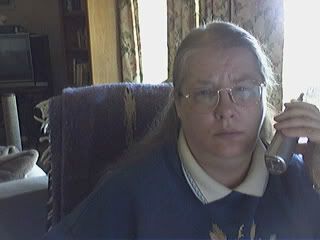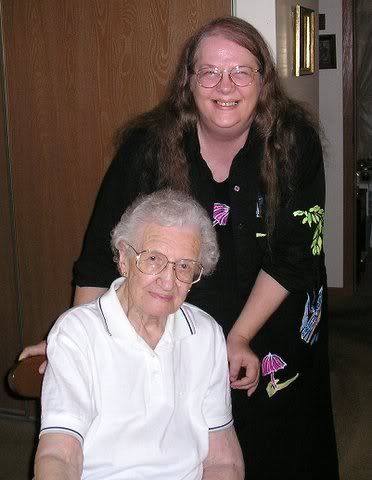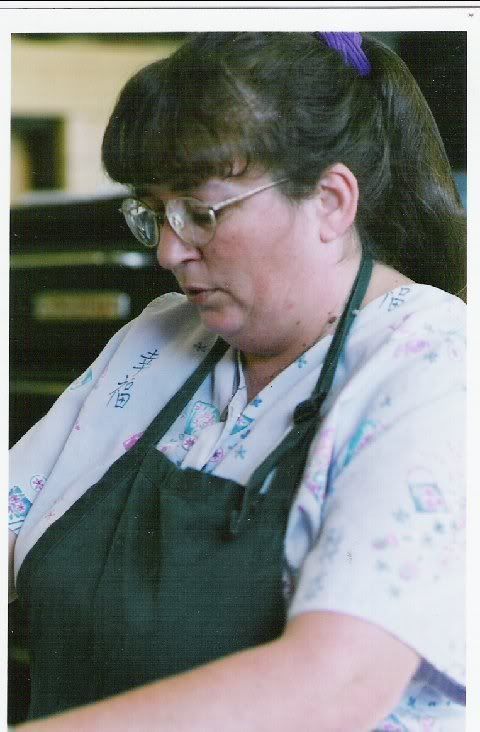Wow ... Tankersley's on Top ... these are excerpts from his book - so cool
Tankersley, K. (2007). Tests that teach: Using standardized tests to improve instruction. Association for Supervision and curriculum Development. Chapter 2. Retrieved October 14, 2007, fromAs information explodes exponentially, we can no longer concentrate on imparting knowledge and facts to our students. We must help students understand how to locate information when needed, sift out the key understandings that are required, and then apply that information to develop solutions to the problems they face in their world. That is what preparing students to think deeply is all about.
We must analyze the gap between what students need to be able to do and what they can do at the present time. Precise, diagnostic lesson planning involves identifying what students will be able to do after your instruction that they could not do before. Effective teachers with high-performing students plan their instruction by identifying exactly what they want their students to be able to do as a result of instruction. They analyze current student performance levels and determine objectives needed to move students to the next performance level as well as the sequence in which those objectives should be presented. They design experiences that will build the needed skills while at the same time allowing students some degree of independence and responsibility for their own learning. Effective teachers organize instruction into small increments and regularly coach their students and model along the way. They create assessments and scoring rubrics that will help them measure student progress. In addition to providing their own feedback to students on how to improve performance, they also teach students how to self-assess and adjust their own performance. Students can hit the targets set for them because they clearly understand what “excellent” looks like. As students become active participants in their own learning, they develop into thinking, purposeful learners who can easily apply their understandings to new problems and situations.
To get yourself organized, begin by listing the tasks and understandings in your chosen content area that are difficult for students. Here are some questions to ask yourself:
• What are the things that give them trouble and that I will need to specifically teach?
• What will they be expected to use to create their responses?
• What stimulus items will students typically see on state assessments—charts, graphs, text, pictures, historical documents, concept-dense material?
• What vocabulary will they be expected to know?
• What problems will students have in processing the material or the understandings that will be necessary?
• What can I do to better prepare them to understand or front-load their foundational skills?
• What are essential understandings or skills that they must master in the content area no matter what their ability level?
Identify the key issues and stumbling blocks that might prevent your students from doing as well as you would like them to do. Plan ways to build student skills and address the concerns that you know will impede learning. Take time at the beginning of the year to lay a solid foundation under students so you can continue to build on this foundation for the rest of the school year.
In many content areas, students will answer broad questions that blend their background knowledge, their ability to think and process information, and perhaps some information specifically provided to them in a text passage. We often refer to these as “global” questions because they require a broad and comprehensive or “global” approach. Global questions are used in all content areas, so teachers must understand how to help students respond to them.
Here is a procedure that we might use to help our students learn to scan text and incorporate text into a response: Make a transparency of a short article from a newspaper, magazine, or the Internet, so that you can use this text to model the process for your students. Begin by teaching your students to identify and write down a question that is to be answered from the article title or a boldfaced heading within the article that seems important. This will help them link reading the text with answering a specific question. In our earlier example of a secondary prompt, students were asked to summarize the advice that the author gave to parents. For this article, we might write down, “What advice is the author giving to parents?”
Writing down the question before scanning the text helps students focus specifically on what it is they are seeking. This process also releases the mind to now concentrate and process the text. Next, we need to make our thinking apparent to students by “thinking aloud” as we are processing the text. Here's the basic procedure for the think-aloud approach:
1. Orally describe your thinking for students as you quickly scan the text for specific clue words that might answer the question. Slow down the process so that students can hear how you process words and sentences and make decisions about the text. Say exactly what you are thinking as you read through the article so that students can hear how you reflect on the information.
2. Help them “listen in” on your thoughts. The most important part of the process for some students, particularly struggling students, is being able to hear the modeling of a “successful thinker” performing a reading task.
3. As you find appropriate material in the text, demonstrate highlighting or underlining the material that seems like it might possibly answer the question that has been written. Model jotting down some notes to help answer the question on a nearby whiteboard or chalkboard if possible.
4. Once you have demonstrated how to locate information that helps answer the question, demonstrate in the same oral manner how to compose a paragraph to respond to the question and summarize the information.
5. Model how to incorporate quotations or citations within the paragraph as you construct your response with students watching.
After you have presented the strategy and had students directly practice it, begin to incorporate this same type of questioning into your daily instruction. Continue to ask students questions like these:
• “What are three reasons that. . . ?”
• “What three things do X and Y have in common?”
• “Do you think that. . . ? Why?”
• “How do you know?”
• “What makes you say that?”
• “Show me in the text why you think that.”
• “What proof can you show me to support that?”
Require students to provide “evidence” by citing the page and paragraph from the text that support their response. I call this “prove it to me” support. Justifying answers helps ensure that students really are processing deeply, not just tossing out answers in the hopes of snagging the right one in passing. When students cite their rationale and the sources that led to their ideas and conclusions, you can observe how they are thinking. This enables you to catch misunderstandings and gaps in comprehension as they occur. Using think-aloud techniques paired with deliberate practice and feedback will build strong literal as well as inferential skills. It will also enable students to comfortably scan material for relevant information in all content areas.
To learn something in a meaningful way, we must be able to relate our own personal background knowledge to the new information. Information crammed into a mind without any understanding of how it connects to or interacts with other information one already knows is useless. When learning is not linked to prior knowledge, the brain doesn't know how to store it or how to categorize it within memory. Think about the last thing you tried to learn that was very difficult for you. When learning is difficult, we feel frustrated, often feeling that the information just isn't “connecting” or making sense to us. This is because we have no background knowledge with which to link the information, so it remains elusive. Information that is not fully understood is not usable to us. We cannot connect it to anything else we may already know, nor can we apply it in any new situation. Information that doesn't make sense to us never makes it into our long-term memory. This is what happens when we “cram” facts or information that has little meaning to us for a one-shot test. Although we may be able to ace the test, we will quickly forget the information. In this case, learning is only superficial. For learning to be accessible and long-lasting, it must be meaningful and connected to other things we know. In other words, we must be able to create a web of connections around the particular information or learning.
Two other tools help students build good foundational skills in any content area, and all content teachers should incorporate them into daily instruction. The first is the use of visual displays and graphic organizers to sort, label, categorize, identify, and interconnect information. Many students learn best by visual means, so linking instruction with visual elements—in addition to tactile and aural elements—helps more students learn. Hundreds of books and Web resources suggest various designs for charts, graphs, and other sorts of web displays that will work well in your content area. These resources help students think critically and compartmentalize information for better recall. Graphic organizers require active thinking and help students reconstruct information in their own words. Processing text in this way helps students build ownership of ideas and helps teachers catch misconceptions or incorrect connections that a student might be making. Find as many types of graphic organizers as possible that will help students organize your content information more effectively.
Another instructional strategy that can help students deepen their understandings of text is the ability to identify similarities and differences. According to Marzano, Pickering, and Pollock (in the book Classroom Instruction That Works 2001), “researchers have found these mental operations to be basic to human thought.
Indeed, they might be considered the ‘core’ of all learning” (p. 14). Questions that require that students make comparisons between concepts, characters, procedures, systems, or some other facet of a content area are some of the most commonly found types of constructed-response items. Finding similarities as well as differences in any content area requires deep thinking and clear understandings of the material being presented. Teachers in all content areas should help students learn to compare and contrast all aspects of their topic at every opportunity. Marzano and his colleagues further advise that while teachers may wish to provide direct instruction when focusing on specific similarities and differences, “if the teacher's goal is to stimulate divergence in students' thinking, however, then he should provide students with a student-directed activity” (p. 16). This can be done by having students define similarities and differences on graphic organizers, create metaphors or analogies to demonstrate their understandings, or write about their thinking in a reflective essay format. The more students can connect similarities and differences with concepts they already know, the more solidly new concepts and information can be linked to what has already been processed and stored in the brain.
Once we have identified the task, the skills to be learned, and how we will prepare our students to learn the necessary skills, we need to outline the steps that our students will take to complete the tasks. The more real or “authentic” the task, the more students will care about completing it to the best of their ability. Again, think about the tasks your students will be asked to perform on assessments, and create as many similar opportunities for them to practice as possible. If students are asked to write letters at assessment time, then find ways to write letters that are appropriate, relevant, and about topics of interest to your students. When students are given tasks they care about, their interest and motivation go up dramatically.
In the days of the Industrial Revolution, when people were being groomed for repetitious, solitary jobs on the assembly line, it was helpful to encourage students to work on tasks by themselves. Now, we work in collaborative teams in the workplace and share responsibilities with others for the success or failure of our tasks and projects. We should help our students support one another and learn to complete tasks as a collaborative team. Allowing students to complete tasks as partners or in small groups of three or four can provide the support that students need to be more successful. The goal is for each student to develop understandings that go deep enough that they can be applied, analyzed, synthesized, evaluated, and turned inside out. When this happens, true learning that can last a lifetime takes place.
One of the best ways to share your expectations about the quality of student work is by providing students with scoring rubrics that specifically outline performance expectations. Give scoring rubrics to students at the start of a task so that they will know the criteria by which they will be evaluated. Students will perform to much higher levels if we can clearly share the criteria for success and teach our students to assess their own work. Rubrics are appropriate for students at all grade levels and should be written in “student-friendly” terms appropriate to their age level. If you have not used rubrics before or need tips about developing them, a number of helpful Web sites—such as www.rubrics4teachers.com, www.teach-nology.com/web_tools/rubrics, or www.rubrics.com—offer additional information and helpful tools for quickly and easily creating your own rubrics. Additional Web sites for rubrics are listed in Appendix B.
Next, we need to help students understand prompts. Teach students to underline or highlight key words such as list, compare, or justify as they read a constructed-response question. For example, students might need to provide “examples and illustrations” within the body of the response. If so, be sure that they highlight this fact so that they remember to do this. If formulas are needed to solve a problem, teach them to jot these down before they begin so that they can concentrate the rest of their thinking on organizing a response that meets the criteria of the prompt or question. Students must fully understand what they need to do to adequately answer the question before they can construct their response. Again, help students think through what a question is really asking by modeling this process orally with students. When they can do this on their own, they will be in a much better position of showing what they know and can do.
Once students have mastered being able to read a question and write a written response, it is time to teach them self-analysis and revision skills. Introduce scoring rubrics to your students at the beginning of the school year, demonstrating how to use them. A simple and fun way of helping students understand how to design a rubric is to ask them to work in groups to create a rubric for cleaning their own bedroom, scored from 0 to 5. Students of all ages can relate to this task and have a pretty thorough understanding of what the ranges would be from level 0 (which equals “No cleaning of the room at all”) to 5 (“Mom's standard for cleaning when company is coming to visit”). For younger students with the intellectual understanding but not the motor skills to complete a written task, have students as a class brainstorm the criteria for the various scores as you record their ideas on the board. When they have completed their rubrics, ask students to rate their bedrooms' condition when they left for school that morning. This is sure to generate some hearty laughs and interesting comments! Students not only will have fun developing rubrics but also will quickly understand how rubrics can be used to evaluate their performance on a task. Once students become familiar with rubrics and how to use them, they can develop their own or help you develop a rubric for a class project or activity they will undertake.
Again, it is important that your students hear your thought processes as you self-analyze. This is what will make visible the invisible and will affect your students' performance.
If we examine the rubrics used by state scorers, we will see that state assessments typically use a score range of 3 to 6 points per constructed-response assessment question. With a 3-point rubric, for example, 3 points would be awarded for an “advanced” response, 2 points for an “average” response, and 1 point for a “minimal” response. When a student either does not respond at all or provides an answer that is not appropriate to the question, that student would receive 0 points.
Scoring rubrics can be based on the number of responses or on the quality of the
response or a combination of both factors. Large complicated projects may be scored on several criteria, while more simple tasks may only need one criterion. Evaluating a story, for example, might need five or six criteria, while a task that simply asks a student to list three similarities between a whale and a dolphin might require a very simple rubric.
State tests often use two different types of scoring guides: one is based on the quality of a response, and the other is based on the quantity of responses.
Scoring Guide Based on Response Quality
Question: Explain how Captain Jim changed during the voyage at sea. Use examples and details from the story to support your answer.
4 points: The response is accurate, logical, and reasonably complete. The response provides several specific details, passages, and examples from the story to illustrate identified changes in the character. The response is well organized and presents a logical argument for the points cited.
3 points: The response is accurate but less complete, and it may be somewhat general or simplistic. Some reasoning may be provided, and the response may cite at least one example or detail to support any identified changes in the character. The response may be marginally organized or less convincing in argument. It lacks the overall depth and completeness present in a 4-point response.
2 points: The response is general and/or simplistic. It may be factually accurate but may fail to cite connections between character changes and details or examples from the story. The response may not flow logically or be well organized. It may cite events from the story rather than details about the changes of the character.
1 point: The response contains limited connections to the details of the story or gross inaccuracies. It does not identify any changes or significant details about the character of the captain. The response may recount memories associated with the topic but fails to address the prompt accurately. It is not well developed and does not have a logical flow.
0 points: The response does not address the prompt or refer to any details of the story or its characters. It is poorly constructed, illogical, or difficult to follow. The response may be off topic.
Scoring Guide Based on Response Quantity
Question: Explain how growing populations in a geographic area put pressure on the ecosystem of the area. Discuss at least four consequences, and use specific examples to support your arguments.
Topics discussed in the article that students might cite:
• Need for sources of additional clean, fresh water
• Need for additional food production but loss of farm land due to urbanization
• Toxic impacts on environment due to pollution from businesses and vehicles
• Impact of construction of roads, homes, and businesses on the environment
• Impact on natural habitats of wildlife due to encroachment on habitats
4 points: The response is accurate and logical, and it provides at least four reasons. It is well organized and includes specific examples to justify the points made.
3 points: The response is accurate and provides at least four responses, but the support may be less complete and developed. The response is not as well developed, and examples are limited or less convincing to support the argument. The response lacks the overall depth and completeness of a 4-point response.
2 points: The response is accurate but contains only two or three reasons, and it does not include any examples to demonstrate key points in the argument. It does not flow logically or is not well organized.
1 point: The response may give only one or two acceptable reasons and have few or no examples in support. It is not well developed and does not have a logical flow.
0 points: The response provides no acceptable reasons. It is poorly constructed, illogical, and/or difficult to follow. It may also be off topic.
Scoring Based on Quantity and Quality
Questions can also be developed that require a specific number of answers and also measure the quality of the response. An example of a question that would require both a quality and a quantity assessment would be the following:
Question: The Vietnam War was a costly war for the United States. Using the text from Chapter 19 in our textbook, explain whether you agree or disagree with this statement. Provide at least four specific reasons for your opinion and specific examples from the text to justify your position.
For a question like this that requires both quantity and quality in its response, you need to develop a blended scoring rubric. Begin by brainstorming acceptable answers as in the quantity rubric. After you've established the criteria for acceptable answers, develop criteria for the quality of the response as in the example of a quality scoring rubric. The following example of a 4-point scoring level demonstrates how the two types of scoring rubrics can be combined:
4 points: The response is accurate and logical, and it includes at least four reasons. It is well organized and provides several specific examples to justify the points made. The response is well organized and complete, and it presents a logical argument.
Rubrics as Performance-Raising Tools
Students should be provided with the scoring rubric at the start of the project or activity and taught to evaluate their own work against the rubric criteria. While using rubrics to help take the “guesswork” out of how students should prepare and justify their answers is not a new concept, regular use of rubrics in content classrooms is not as prevalent as it could be. Rubrics help students understand the various levels of performance associated with a task. They can provide high-quality feedback, involve students in self-assessment, and guide the depth of learning that students are expected to display. Students can also learn to use the rubric to critique the work of peers so that students can look at revision as a process of self-improvement where the “rules” are clearly established from the beginning of the task.
Learning to use a rubric as a yardstick of performance takes some of the guesswork out of performance requirements and helps students identify their weak areas more objectively. Teachers who help their students learn to self-evaluate and make improvement revisions on their own work report higher levels of student understanding and overall performance in content areas.
Terms and Vocabulary Reinforcement
Embedded in almost all state assessments are questions that ask students to define or provide synonyms for key vocabulary terms and important words in the content discipline. Because this testing strand cuts across all content areas, I have included a few strategies that apply to all content areas. Teachers can use these strategies to help students improve their mastery of key words and terms and their performance on assessments asking students to define or identify the meaning of specialized terms.
One of the most common types of questions on state exams is the multiple-choice question that asks students to consider a specific term and choose the best meaning for it. Help your students do well on these types of questions by teaching them how to use the context to determine word meanings. For example, you might say, “Look at the word _________ on page X of your text. What do you think this word might mean as it is used here?” When students respond, ask probing questions to find out what clues they used from the passage to determine the meaning: “How do you know? What details or information suggests to you that this might be the meaning of this word here?” Again, require students to respond with specific information and do not accept nonspecific answers.
Point out words in context, and ask students to think about what a word might mean. As they offer meanings, probe them to describe their thinking: “How did you figure that out?” or “What words or ideas in the sentence helped you unravel or identify that?” Deliberately thinking about how to decipher word meaning helps students apply these skills on a regular basis.
Another approach to helping students analyze vocabulary in context is by providing a structured format to do so, such as the following:
1. Look at the words before and after the word. Do they give you any clues?
2. Connect what you already know about this topic to what is said in this
paragraph.
3. Predict the meaning that you think makes sense and reread the passage. Does the word you predict make sense in the context of the paragraph?
4. If not, rethink your idea and try a different meaning. Does it make sense?
5. If you still cannot understand the meaning of the word, either look it up or ask a resource who can help you.
6. When you understand the meaning of the word, go back and reread the passage and make sure that you now understand the meaning of the paragraph.
Writing to Develop Vocabulary
One of the best instructional strategies that we can use to build our students' skills in developing responses and to improve their ability to express themselves and communicate their ideas is to incorporate lots of writing into every content course we teach. Just as students who read more become better readers, students who write more become better writers and communicators. Find ways to have students use reflective writing and thinking about the concepts they are learning, the questions they have, and the things they want to know. The more we can have students write about processes, procedures, the things they know, and the things that still confuse them, the better strategic thinkers they will become.
















